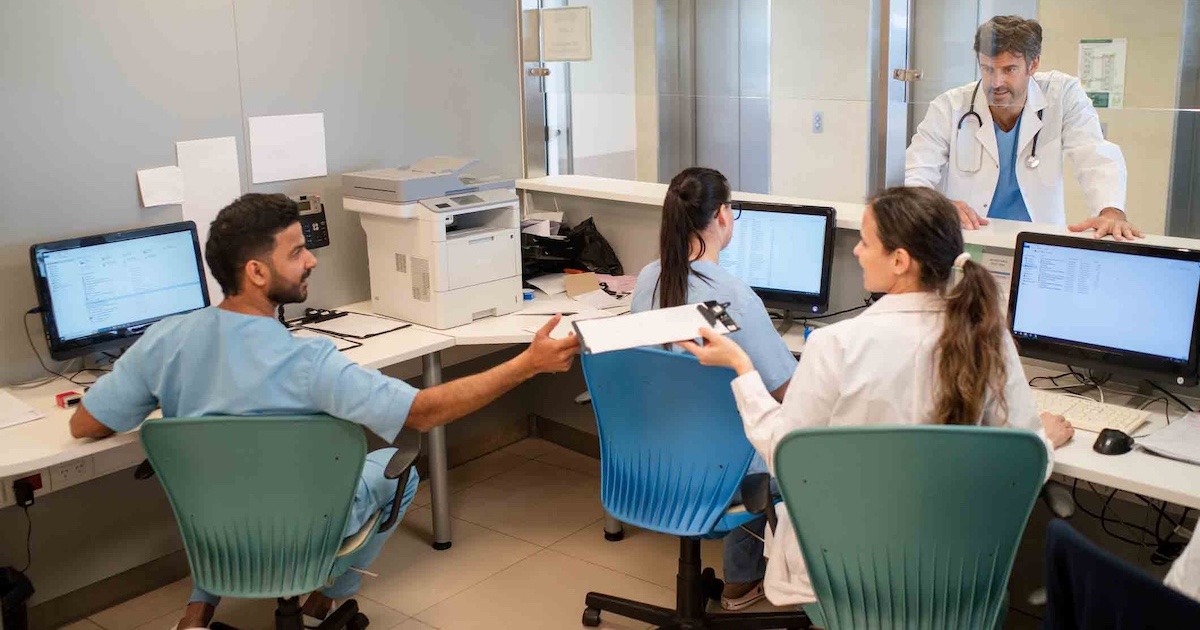Mobile communications are no longer an option in the clinical setting. Quickly reaching the right provider for better patient care is a baseline requirement no matter what device is used, and mobile is quickly becoming the norm. Plus, the communication stakes are high in healthcare.
The Joint Commission consistently finds communication to be among the top three leading root causes of sentinel events (unanticipated events resulting in serious injury or death), and poor communication is the number one root cause of serious injury or death related to delay in treatment. The dangers of poor communication coupled with the changing ways in which people interact with smartphones, tablets and wearables has moved the question of supporting mobile devices in hospitals from "Yes or no?" to a matter of "How?" In response, hospitals and health systems have been working to incorporate robust mobility strategies into their overall workflows.
[See also: mHealth masters: Why BYOD is a risky strategy]
A key question is whether hospitals will allow staff to use personal devices for patient care, and if so, how that use can be managed. Clearly, bring your own device (BYOD) continues to be a hot topic in healthcare.
Mobile device capabilities have expanded to include so much more than calls and texts. For clinicians, these functions include drug reference apps, EMR access, critical test result notifications, code alerts and secure communications with colleagues. Though it might be very helpful for staff, full systems access through personal devices is not always granted due to data security concerns. The use of personal mobile devices raises a lot of questions about security: What information is shared? Is it secure in transit and when stored on the device? Is it only accessible through a portal?
We recently completed a survey of more than 450 individuals in healthcare, ranging from nurses and IT managers to physicians and chief medical information officers. Our purpose was to assess the current state of the BYOD landscape as more hospitals make progress toward enabling effective mobile communications. Our results confirmed the continuing trend of data security remaining a top challenge and revealed surprising ideas on how to address it.
[See also: Want secure BYOD? Avoid work-arounds]
Of the organizations that responded, 73 percent support some form of BYOD today. Gartner researchers expect further growth, predicting that 90 percent of organizations will support some aspect of BYOD by 2017, and that by 2018 there will be twice as many employee-owned devices in the workplace as enterprise-owned devices. The growth in BYOD appears largely driven by economics and ease of use. Hospitals can save money with BYOD, both on the devices themselves and on administrative time figuring out data plans and use reimbursements.
Interestingly, within BYOD organizations, permission to use personal devices is not equal across different roles. Of the hospitals that allow BYOD in our survey, 91 percent support BYOD for physicians and 79 percent for administrators, but only 51 percent for nursing staff. Part of this difference could be because 38 percent of respondents cited physician demand as one of the main drivers for pursuing a BYOD environment in the first place. It is important to note that there are many more nurses than physicians in a hospital. There are also differences in the communications needs of nurses vs. physicians that may help explain the disparity. A number of our customers have said they purchase devices for nursing staff because shared devices are easier to provide security for, are less expensive and can be programmed with single sign-on for patient assignments at the start of a shift. In addition, nurses need to communicate largely during their shift, while physicians often field patient-specific questions when on call, during non-rounding hours and even traveling between locations.
When we asked organizations to identify their biggest challenges with BYOD, the most common response was data security at 62 percent. Of the organizations that do not allow any form of BYOD, 81 percent said the biggest reason was a concern for data security. With security persisting as the largest concern for BYOD environments, we were surprised that only 47 percent of hospitals (inclusive of both BYOD and non-BYOD organizations) provide their users with a secure texting solution. Of those who have deployed a secure texting app, the majority indicated protecting personal health information (PHI) as a primary driver for use (78 percent), followed by the need to support easier physician-to-physician conversations (59 percent).
Hospitals recognize the need to support better communications among care team members, with 71 percent sharing they have stated goals to improve physician-to-physician communications, and 74 percent to improve nurse-to-physician communications. While mobile devices are the logical choice to enable these communications, BYOD continues to be a conflicting part of the answer. Some organizations have chosen to avoid BYOD scenarios as a way to protect data. Other teams (34 percent of those who currently have no BYOD support) are assessing the feasibility of a program, and a fairly large percentage of institutions that allow BYOD are still working to enhance the security of patient and institutional information. And while mobile devices are certainly poised to assist with communication improvements, they are just part of the equation. Staff need to be able to search for and reach the right person, by name, position or on-call status. Being able to look up contact information in the directory and on-call schedules is a vital part of an effective workflow.
In a Spyglass survey of physicians, only 15 percent of doctors said their hospital's IT team has a mobile strategy to support clinical communications and collaborative, team-based care. So what do the doctors do instead? Ninety-six percent report using unsecured SMS (texting) to coordinate care for patients, which puts physicians and hospitals at risk for HIPAA violations. A secure texting app with full online directory and on-call integration to facilitate care team communication is one way to help protect PHI, especially within a BYOD setting. And one way to protect organizational data that can be accessed through the EMR and other systems is to limit individual access through a mobile device management (MDM) solution. Currently, 27 percent of our survey respondents use an MDM solution and another 26 percent are in the process of evaluating one. Clearly, there is opportunity to expand the use of this type of solution in the hospital setting.
[See also: 4 rules to make BYOD work in a hospital]
It will be interesting to watch how the BYOD scenario continues to unfold in the coming years, and if the predictions of an even greater migration toward BYOD will be accurate. The percentage of hospitals reporting some form of BYOD support has declined 15 percent since our 2014 survey. Our results also provided another interesting point--responses in 2014 indicated nearly 55 percent of smartphones and tablets were personal devices versus only 48 percent in 2015. So, the ratio of BYOD devices in use also appears to be declining. Perhaps as more hospitals venture into the mobile space, the balance of BYOD is shifting as more nursing staff are given hospital-issued equipment to share across shifts. Or could this reduction in personal devices be due primarily to the continuing concerns over data security, and will security remain a hurdle for BYOD proliferation?
Lastly, hospitals are starting to think more broadly than just about devices or BYOD, and rightly so. Mobile devices themselves are not enough to provide the sought-after improvements in care communication, even with secure texting and an MDM solution. The baseline requirement of quickly reaching the right provider for better patient care will drive the development of full mobility strategies that address everything from who is allowed to access hospital networks and applications, to the campus Wi-Fi infrastructure. We are all entering uncharted territory as healthcare becomes a mobile industry, but what is clear is that there are many benefits of enhancing mobile communications among clinicians, and patients will certainly benefit from a thoughtful and cohesive approach.
Cristin O'Brien is the senior clinical marketing manager at Spok.


